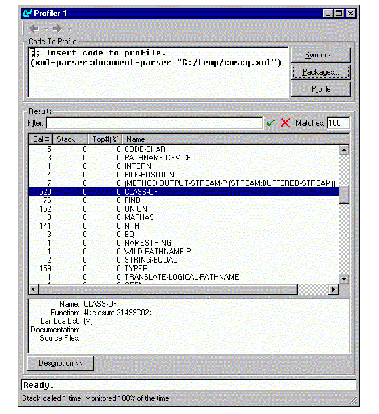 in the Podium.
in the Podium.





The Profiler provides a way of monitoring Lisp functions during the execution of your code. It is likely that you can make your code more efficient using the data that the Profiler displays.
The Profiler helps you to identify functions which are called frequently or are particularly slow. You should concentrate your optimization efforts on these routines.
To create a Profiler, choose
Tools > Profiler
or click  in the Podium.
in the Podium.


The Profiler has several areas. The Code to Profile panel lets you set up and profile any amount of Lisp source code.
The Results area is used to display the results of a profile.
In The Profiler, the Packages button was first used to view the package filter selection dialog box (shown in Figure 18.3); all packages except from COMMON-LISP-USER were deselected. By default, all packages are selected. When trying to profile code without a user interface, it is useful to deselect the package CAPI.
You can add a description area by clicking on the Description >> button. The Description area provides a description of any item selected in the Results area, giving you the name, function, lambda list, documentation string and source files of the selected item. Hide the description area if you wish by clicking on the Description << button